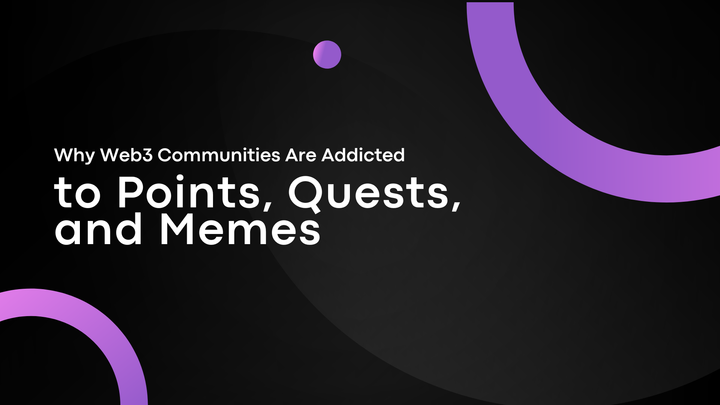Mitosis: Pioneering the Future of Multi-Asset Liquidity in DeFi

The evolution of Decentralized Finance (DeFi) has transformed traditional financial systems, introducing new ways to supply and manage liquidity. However, despite its rapid growth, the sector still faces inefficiencies, particularly in liquidity fragmentation and capital inefficiency. Most liquidity frameworks rely on single-asset provisioning, where capital is locked into isolated pools, limiting flexibility and broader market participation. Multi-asset liquidity supply offers a paradigm shift, allowing liquidity to be efficiently allocated across multiple assets and protocols.
Mitosis has emerged as a leading innovator, revolutionizing liquidity management through programmable and cross-chain liquidity mechanisms. Mitosis enhances capital efficiency and ensures deeper liquidity across DeFi ecosystems by enabling multi-asset liquidity pools. Additionally, automated market makers (AMMs) play a central role in this framework, optimizing liquidity utilization, reducing slippage, and improving price discovery.
This article explores the current state of multi-asset liquidity supply in Mitosis, the role of AMMs in facilitating seamless liquidity allocation, and the benefits and challenges of this emerging model. Readers will gain a deeper understanding of how Mitosis is shaping the future of DeFi liquidity and what the next phase of innovation may bring.
How Mitosis Has Integrated Multi-Asset Liquidity Pools
Mitosis has already made significant progress in multi-asset liquidity supply by expanding beyond traditional single-asset models. The platform supports diversified liquidity pools, enabling liquidity providers (LPs) to supply multiple assets dynamically across different DeFi strategies. This marks a major shift from the conventional approach, where liquidity is often restricted to a single protocol or asset type.
One of Mitosis' most powerful innovations is its cross-chain liquidity optimization mechanism. Unlike static liquidity pools, where capital remains locked in one blockchain ecosystem, Mitosis enables seamless asset mobility across networks. By leveraging arbitrary message bridges and inter-chain communication protocols, liquidity can be deployed where it is most needed, reducing inefficiencies and unlocking new yield opportunities for LPs.
Additionally, Mitosis governance frameworks allow liquidity providers to have a direct role in liquidity allocation decisions. Through EOL (Ecosystem-Owned Liquidity), LPs receive miAssets, which grant governance rights over liquidity strategies. Meanwhile, Matrix enables curated liquidity campaigns, where LPs receive maAssets in exchange for committing capital to time-bound yield opportunities. This dual-layered approach ensures that liquidity is both governance-driven and demand-responsive, striking a balance between community control and market efficiency.
The next step for Mitosis could involve further automation in liquidity allocation, ensuring liquidity dynamically flows between these frameworks without requiring active management from LPs. By introducing structured liquidity portfolios, Mitosis could allow LPs to hold custom liquidity baskets composed of assets across EOL, Matrix, and other DeFi protocols, maximizing yield and minimizing risk.
The Role of Automated Market Makers (AMMs)
Automated Market Makers (AMMs) are essential to Mitosis's multi-asset liquidity ecosystem, providing efficient price discovery and seamless asset swaps across DeFi networks. AMMs remove the need for centralized intermediaries, ensuring liquidity is always accessible for traders while optimizing returns for LPs.
One of the key innovations in Mitosis AMM integration is multi-asset liquidity routing. Instead of requiring liquidity providers to manually pair assets, AMMs dynamically adjust liquidity allocation based on trading volume and price fluctuations. This ensures that liquidity is always concentrated where it is most needed, minimizing slippage and maximizing efficiency.
Another critical function of AMMs in the Mitosis ecosystem is impermanent loss mitigation. In traditional AMM models, LPs face the risk of impermanent loss when the value of their deposited assets fluctuates relative to the market. Mitosis addresses this by implementing liquidity-backed insurance mechanisms and volatility-adjusted weighting, ensuring LPs can optimize their risk-adjusted returns.
Additionally, the Mitosis AMM framework supports cross-chain liquidity aggregation, allowing users to trade assets seamlessly across different blockchain ecosystems. By integrating interoperable liquidity bridges, Mitosis ensures that LPs can supply liquidity without being constrained by individual blockchain limitations, making DeFi liquidity more fluid and accessible.
Looking ahead, Mitosis could further enhance its AMM model by integrating automated rebalancing mechanisms, where liquidity is dynamically shifted between different DeFi protocols based on real-time market conditions. This would create a self-optimizing liquidity network, further improving capital efficiency and yield generation.
Benefits and Challenges of Multi-Asset Liquidity in DeFi
The benefits of multi-asset liquidity supply in Mitosis are profound. One of the most significant advantages is enhanced capital efficiency—LPs no longer need to lock funds into isolated pools but can instead participate in multi-asset liquidity frameworks that dynamically adjust to market conditions. This ensures that liquidity is always optimally deployed, reducing idle capital and increasing overall yield generation.
Another major benefit is reduced slippage in trading. Traditional single-asset liquidity pools often suffer from thin order books, leading to high slippage when large trades occur. Multi-asset liquidity pools provide deeper liquidity buffers, ensuring that trades execute with minimal price impact. This is particularly beneficial for institutional traders and high-volume DeFi users.
Furthermore, multi-asset liquidity supply enhances portfolio diversification. By participating in a structured liquidity portfolio, LPs gain exposure to multiple DeFi opportunities simultaneously, reducing concentration risk and increasing long-term yield stability.
However, despite these advantages, challenges remain in implementing multi-asset liquidity models. One of the primary concerns is risk complexity—unlike single-asset pools, where risk factors are relatively straightforward, multi-asset pools introduce correlation risks, liquidity imbalances, and volatility exposure across multiple assets. Ensuring effective risk management will be critical for the continued success of the Mitosis liquidity model.
Additionally, regulatory uncertainties present an ongoing challenge. As multi-asset liquidity pools resemble structured financial products, they may attract regulatory scrutiny in certain jurisdictions. Mitosis will need to ensure compliance while maintaining decentralization and permissionless access, striking a balance between innovation and regulatory adaptability.
Another hurdle is cross-chain liquidity fragmentation. While Mitosis has made significant progress in integrating cross-chain liquidity management, challenges such as MEV (Maximal Extractable Value) risks, oracle dependencies, and cross-chain slippage must be continuously addressed to ensure seamless liquidity movement across ecosystems.
Bottom line
Mitosis is at the forefront of multi-asset liquidity supply, pioneering a more efficient, scalable, and composable liquidity ecosystem in DeFi. By integrating multi-asset liquidity pools, cross-chain liquidity optimization, and automated liquidity management, Mitosis ensures that liquidity providers can maximize capital efficiency while minimizing exposure risks.
Automated Market Makers (AMMs) play a vital role in this framework, facilitating dynamic liquidity allocation, optimizing yield strategies, and reducing impermanent loss risks. As DeFi evolves, the combination of Mitosis' programmable liquidity infrastructure and AMM-driven liquidity strategies will define the next era of decentralized liquidity markets.
However, while the benefits of multi-asset liquidity are substantial—enhanced capital efficiency, deeper liquidity, and diversified risk exposure—challenges such as risk complexity, regulatory uncertainties, and cross-chain liquidity fragmentation must be addressed.
As DeFi moves toward a more interconnected and composable liquidity landscape, an essential question arises: How can decentralized liquidity protocols ensure accessibility, scalability, and efficiency while maintaining decentralization?
The answer to this question will shape the next phase of DeFi's evolution, influencing how liquidity is supplied, optimized, and distributed across the global financial ecosystem.



Comments ()